main |
sidebar

Ernest William Christmas (1863-1918) was an Australian painter. He was born near Adelaide, South Australia in 1863 and studied art in Adelaide, Sydney and in London. He painted broadly in England, exhibiting in the early years of the century at the Royal Academy, the Royal Institute of Oil Painters, the Royal Society of British Artists, and the Royal Glasgow Institute of Fine Arts and in the provinces.
He was elected to the British Royal British Academy in 1909. In 1910-11, he painted mountains and lakes in Argentina and Chile. He lived in San Francisco around 1900 and again around 1915.
He was an avid traveler, but spent the last two years of his life in Hawaii, where he painted landscapes including dramatic volcano scenes. Ernest William Christmas died in Honolulu in 1918.

The 20th century saw an increasing rejection of beauty by artists and philosophers alike, culminating in postmodernism's anti-aesthetics. This is despite beauty being a central concern of one of postmodernism's main influences, Friedrich Nietzsche, who argued that the Will to Power was the Will to Beauty.

Inge King is a prominent Australian sculptor, who has many significant public, commercial and private sculpture commissions to her credit.
Inge Studied sculpture with Hermann Nonnenmacher (1892–1988) during 1936-37, and in October 1937 she was admitted to the Berlin Academy of Fine Arts. She was forced to leave the academy a year later, shortly before Kristallnacht. In 1939 Inge travelled to England, and spent two terms at the Royal Academy London until it was closed due to war-time bombing. Inge joined that sculpture classes of Benno Schotz at the Glasgow School of Art in 1941 and stayed until 1943. Inge met her husband, the Australian artist Grahame King, at The Abbey Arts Centre in Hertfordshire, England and they were married in 1950. Grahame and Inge returned to Australia and the settled in Melbourne in 1951.
Mrs. King has been at the forefront of developing non-figurative sculpture in Australia. She was a member of The Centre 5 group of sculptors grew from a 1961 meeting convened by Julius Kane in Melbourne to, 'help foster greater public awareness in contemporary sculpture in Australia'. Members of the Centre 5 group are included Lenton Parr, Inge King, Norma Redpath, Julius Kane, Vincas Jomantas, Clifford Last and Teisutis Zikaras.
Many of her large scale works are found in public plazas, including Forward Surge, 1974 at the Victorian Arts Centre and on numerous university campuses. Inge has held over 26 solo exhibitions including a retrospective at the National Gallery of Victoria in 1992, and has participated in over 60 group shows in London, New York, Australia and New Zealand.
Forward Surge :
Inge's most famous sculpture is the monumental Forward Surge at the Melbourne Art Centre. It is made from 50mm mild steel and stands 5.2m high, 15.1m wide and 13.7m deep. The sculpture was commissioned by the Victorian Arts Centre in 1974; construction was completed in 1976 and the work was installed in its present position in 1981. More images
Forward Surge is the major sculptural draw card for the Arts Centre precinct and one of our most prominent and valued works of art. It has been listed on the National Trust Register since 1992, and is noted by the National Trust as King's "most monumental work of art, and probably most significant"

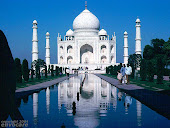
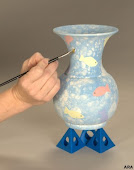


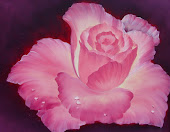
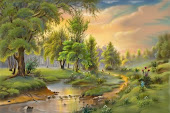


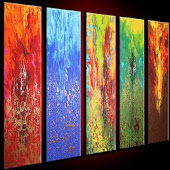

Tuesday, August 30, 2011

Ernest William Christmas (1863-1918) was an Australian painter. He was born near Adelaide, South Australia in 1863 and studied art in Adelaide, Sydney and in London. He painted broadly in England, exhibiting in the early years of the century at the Royal Academy, the Royal Institute of Oil Painters, the Royal Society of British Artists, and the Royal Glasgow Institute of Fine Arts and in the provinces.
He was elected to the British Royal British Academy in 1909. In 1910-11, he painted mountains and lakes in Argentina and Chile. He lived in San Francisco around 1900 and again around 1915.
He was an avid traveler, but spent the last two years of his life in Hawaii, where he painted landscapes including dramatic volcano scenes. Ernest William Christmas died in Honolulu in 1918.
Tuesday, August 23, 2011

Beauty is a characteristic of a person, animal, place, object, or idea that provides a perceptual experience of pleasure, meaning, or satisfaction. Beauty is studied as part of aesthetics, sociology, social psychology, and culture. An "ideal beauty" is an entity which is admired, or possesses features widely attributed to beauty in a particular culture, for perfection.
The experience of "beauty" often involves the interpretation of some entity as being in balance and harmony with nature, which may lead to feelings of attraction and emotional well-being. Because this is a subjective experience, it is often said that "beauty is in the eye of the beholder." In its most profound sense, beauty may engender a salient experience of positive reflection about the meaning of one's own existence. A subject of beauty is anything that resonates with personal meaning.
Historical view of beauty:
There is evidence that a preference for beautiful faces emerges early in child development, and that the standards of good looks are similar across different genders and cultures. Symmetry is also important because it suggests the absence of genetic or acquired defects.
There is evidence that a preference for beautiful faces emerges early in child development, and that the standards of good looks are similar across different genders and cultures. Symmetry is also important because it suggests the absence of genetic or acquired defects.
Although style and fashion vary widely, cross-cultural research has found a variety of commonalities in people's perception of beauty. The earliest Western theory of beauty can be found in the works of early Greek philosophers from the pre-Socratic period, such as Pythagoras. The Pythagorean School saw a strong connection between mathematics and beauty. In particular, they noted that objects proportioned according to the golden ratio seemed more attractive. Ancient Greek architecture is based on this view of symmetry and proportion.

In the Romantic period, Edmund Burke pointed out the differences between beauty in its classical meaning and Sublime. The concept of the Sublime by Burke and Kant permitted us to understand that even if Gothic art and architecture are not always "symmetrical" or adherent to classical standard of beauty as the other style, gothic art is by no mean "ugly" or ridiculous: it's just another aesthetic category, the Sublime category.

In the Romantic period, Edmund Burke pointed out the differences between beauty in its classical meaning and Sublime. The concept of the Sublime by Burke and Kant permitted us to understand that even if Gothic art and architecture are not always "symmetrical" or adherent to classical standard of beauty as the other style, gothic art is by no mean "ugly" or ridiculous: it's just another aesthetic category, the Sublime category.
The 20th century saw an increasing rejection of beauty by artists and philosophers alike, culminating in postmodernism's anti-aesthetics. This is despite beauty being a central concern of one of postmodernism's main influences, Friedrich Nietzsche, who argued that the Will to Power was the Will to Beauty.
In the aftermath of postmodernism's rejection of beauty, thinkers such as Roger Scrutiny and Frederick Turner have returned to beauty as an important value. Elaine Scarry also argues that beauty is related to justice.
Saturday, August 20, 2011

Inge King is a prominent Australian sculptor, who has many significant public, commercial and private sculpture commissions to her credit.
Inge Studied sculpture with Hermann Nonnenmacher (1892–1988) during 1936-37, and in October 1937 she was admitted to the Berlin Academy of Fine Arts. She was forced to leave the academy a year later, shortly before Kristallnacht. In 1939 Inge travelled to England, and spent two terms at the Royal Academy London until it was closed due to war-time bombing. Inge joined that sculpture classes of Benno Schotz at the Glasgow School of Art in 1941 and stayed until 1943. Inge met her husband, the Australian artist Grahame King, at The Abbey Arts Centre in Hertfordshire, England and they were married in 1950. Grahame and Inge returned to Australia and the settled in Melbourne in 1951.
Mrs. King has been at the forefront of developing non-figurative sculpture in Australia. She was a member of The Centre 5 group of sculptors grew from a 1961 meeting convened by Julius Kane in Melbourne to, 'help foster greater public awareness in contemporary sculpture in Australia'. Members of the Centre 5 group are included Lenton Parr, Inge King, Norma Redpath, Julius Kane, Vincas Jomantas, Clifford Last and Teisutis Zikaras.
Many of her large scale works are found in public plazas, including Forward Surge, 1974 at the Victorian Arts Centre and on numerous university campuses. Inge has held over 26 solo exhibitions including a retrospective at the National Gallery of Victoria in 1992, and has participated in over 60 group shows in London, New York, Australia and New Zealand.
Forward Surge :
Inge's most famous sculpture is the monumental Forward Surge at the Melbourne Art Centre. It is made from 50mm mild steel and stands 5.2m high, 15.1m wide and 13.7m deep. The sculpture was commissioned by the Victorian Arts Centre in 1974; construction was completed in 1976 and the work was installed in its present position in 1981. More images
Forward Surge is the major sculptural draw card for the Arts Centre precinct and one of our most prominent and valued works of art. It has been listed on the National Trust Register since 1992, and is noted by the National Trust as King's "most monumental work of art, and probably most significant"
Tuesday, August 16, 2011

Automat (1927) is a painting by Edward Hopper which portrays alone woman staring into a cup of coffee in an Automat at night. The mirror image of identical rows of light fixtures stretches out through the night-blackened window.
As often happens in Hopper's paintings, both the circumstances of the woman and her mood is mixed. She is well dressed and wearing makeup, which could indicate that she is on her way to or from work in a job where personal appearance is important, or is en route to or from a social event. Was removed one glove, which may indicate that she is distracted, in a hurry and can stop for a moment, or simply just arrived from abroad, and has not yet warmed up.
The time of year—late autumn or winter—is evident from the fact that the woman is affectionately dressed. But the time of day is unclear, since days are short at this time of year. It is possible, for example, that it is just after sunset, and early enough in the evening that the automat could be the spot at which she has arranged to rendezvous with a friend. Or it could be late at night, after the woman has completed a shift at work. Or again, it could be early in the morning, before sunrise, as a shift is about to start.
Whatever the hour, the restaurant appears to be largely empty and there are no signs of activity) on the street outside. This adds to the sense of loneliness, and has caused the painting to be popularly associated with the concept of urban alienation. One critic has observed that, in a pose typical of Hopper's melancholic subjects, "the woman's eyes are downcast and her thoughts turned inward."
Another critic has described her as "gazing at her coffee cup as if it were the last thing in the world she could hold on to." In 1995, Time magazine used Automat as the cover image for a story about stress and depression in the 20th century
;;
Subscribe to:
Posts (Atom)
Tajmahal Paintings

Painting Iteams

Creation of Paintings

Painting Equipments

Beautiful Rose Painting

Green Nature Painting

Canvas Painting

Pictute of Artist

Color Paintings

Online Paintings
